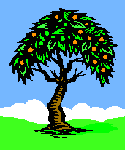After the January Blizzard Paul Basham went out on the trails at Wiley Christian Retirement Community to “read the stories in the snow.” There were tracks of a raccoon, turkeys, squirrels, deer, a coyote, a fox, and evidence that a hawk or owl had stopped a bunny in its tracks — literally.
Reprinted from the March 2016 issue of Wiley Echoes.
A few days after the January blizzard, I put on my snowshoes and I went out through the woods adjacent to our Wiley campus to read the stories in the snow. The first tracks I saw were the unmistakable human-hand-like tracks of a raccoon. I followed the tracks until they entered the thick brush on the end of a pond which was frozen over except for some open water around the edge. Raccoons love to dabble along shallow water looking for a quick snack.
Later I came across the tracks of several turkeys that were on the move. When their tracks came to a large oak tree, there was a considerable disturbance in the snow around the tree as the turkeys most likely had been foraging for acorns.
The tracks of squirrels indicated they were busy checking out their neighborhood after the first major snow storm of the winter, which up to now had been pleasantly mild. Can they actually remember where they had stashed away some of their nuts for such a time as this?
At one place there were so many deer tracks that I couldn’t put my feet down without stepping on deer tracks. I looked around to see what was so attractive to the deer, and then I saw the kernels of yellow corn scattered around. The corn had no doubt been put there by a deer hunter. In New Jersey it is legal to bait deer. But at this time there were no signs of a deer hunter’s presence, fortunately for the deer.
The tracks I saw of a coyote were in a straight line as if the coyote was on a mission, but the tracks of a fox were meandering as if he was checking out all the places where his quarry might be hiding. Of special interest to me were the tracks of a rabbit that ended abruptly amid the marks in the snow made by the wings of a large bird. As I read the details in the snow, a hawk or an owl must have spotted the rabbit and swooped down to snatch it in its tracks. The Eastern cottontail does not change its coat to white like the northern snowshoe hare, but remains brown all winter, making it an easy target in the snow.
Stories in the snow are fund to read, and each time I’m out hiking on the nature trail after a snow storm the stories are always different.
Paul Basham
